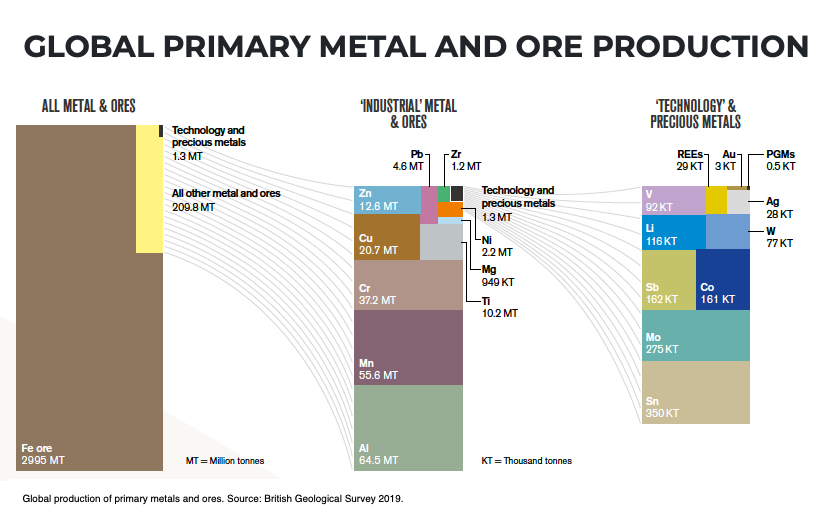GRAPH: Global metal and ore production at a glance
The Birmingham Centre for Strategic Elements and Critical Materials recently published a report that provides an excellent overview of the sector, which is getting renewed attention in Europe and the US.
The authors point out that although the demand for some technology-critical metals is growing rapidly, the overall market size for them is dwarfed by the main industrial metal sectors – a fact this graph vividly illustrates:
“In some instances this means that the major mining companies have not invested in technology-critical metals and most exploration and development is carried out by junior companies. Single entity mines in niche resources are more vulnerable to price fluctuations.
“It is also important to note however that many of these technology-critical elements are a co-product or by-product of mining operations for the major metals. These are more likely to be produced by the major mining companies, but they are vulnerable to variations in demand for the ‘parent’ major metal.”

More News
California start-up launches next-generation magnesium production technology
May 28, 2025 | 03:09 pm
{{ commodity.name }}
{{ post.title }}
{{ post.date }}


2 Comments
James West
The graph is fundamentally misleading, or at least misleadingly labelled. The figures for “Primary metal and Ore” clearly do not include Ore for most metals. For example, the 20MT shown for Cu is basically the primary metal alone. The ore produced is probably 100x this (average Cu ore grades are now typically below 1%). Very poor analysis.
Frik Els
Thanks for the comment James. I think the chart mixes ore and metal based on how it’s traded. As you point out the 20mt copper is metal produced, but no-one buys and sells copper ore. The iron ore total of nearly 3 billion would be what is produced and sold presumably on the standard 62% Fe content basis which given low grade mines in China and elsewhere means 2995mt is also an undercount of actual iron ore produced at mines. Since such a tiny fraction of iron ore is made into iron how do you compare iron and copper output on a metal for metal basis. I guess subtracting 38% of 2995mt would give you a figure, but I don’t know how you really get to apples vs apples (how do you account for nickel pig iron production for instance).